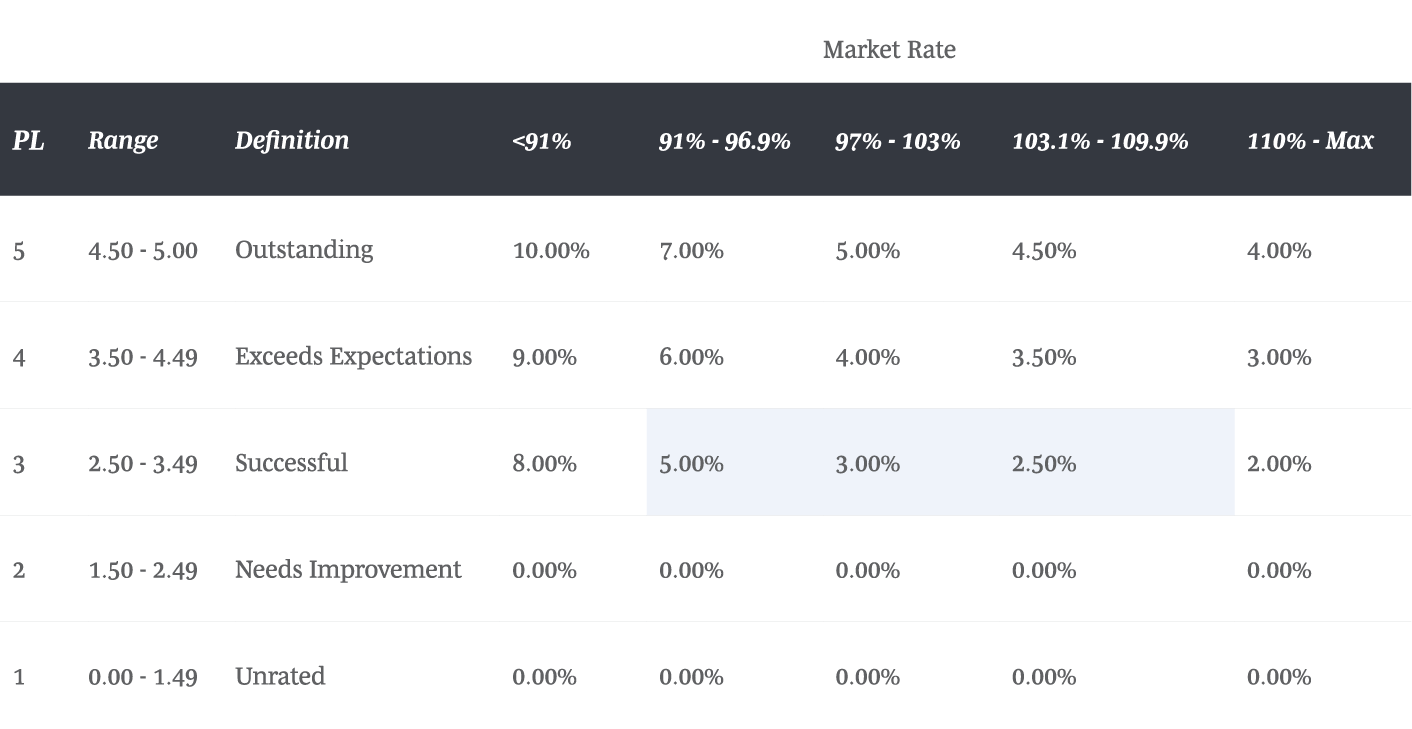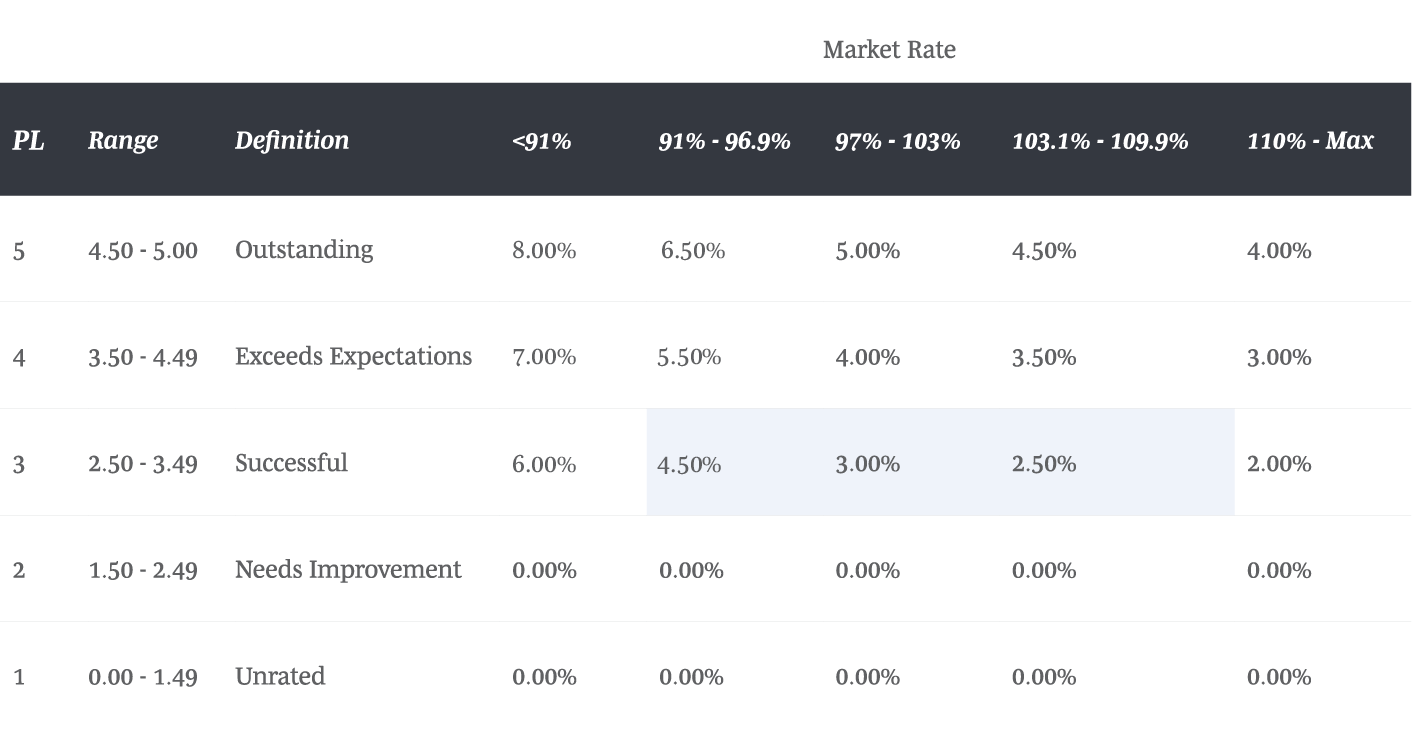By Christie Summervill

Update: The Definitive Merit Increase Matrix for 2023 is available now.
With a 6.25% inflation rate that is moving into a projected 8.0% inflation rate, next year is a guarantee that salaries are going to continue to shoot up, fueling this season dubbed the “Great Resignation.” Using the wrong merit increase matrix to determine 2022 salary increases is likely to be disastrous for your financial institution.
Using the wrong merit increase matrix to determine 2022 salary increases is likely to be disastrous for your financial institution.
In August 2021, salary surveys showed the projected 2022 labor budget was around 3.0%, but don’t count on it! The average salary structure movement (from 2021 midpoint to 2022 midpoint) is around 3.0%. If this is the case, then this would leave nothing for paying for performance or moving pay levels closer to the midpoint. A 3% merit increase would merely leave you in keeping with salary expectations and not elevating them based on performance values. One of the potential outcomes of this would be unnecessary turnover which is highest amongst those who have less than one year of experience. By advocating that your 2022 salary budget be increased to 4% or greater, you will be able to effectively and competitively recruit for lower-level and yet critical positions such as Call Center Rep, Deposit Operations Specialist, Admin Assistant, Account Opener, and Head Teller.
When developing an effective labor budget matrix, keep your eye on the percentage where “Meets Expectation” intersects with the “Market Rate Compa Ratio” (between 97% – 103%). In 2021 that number is at 3%. Now consider how much of a salary increase your top-rated performers should receive over your “Meets Expectations” rated performers. If the difference between these classes of employees is at 1%, then you are essentially saying “performance does not pay here,” which may lead to higher turnover or a disenfranchised workforce.
Ideally, your range of performance classes should be at least a 2% difference to account for “paying for performance” among your highest-performing employees.
At all costs, you must protect “the red zone,” which is the difference between how much an increase should be between someone who is paid at midpoint and Meeting Expectations (3%) and someone who is paid lower in the salary range.
If you have a non-exempt employee who is new to the company or position, their compa ratio should be set to at least 85% of the midpoint. With this in mind, you need a difference of 5% so that their pay level will meet the market rate expectation within three years if you are operating in a normal market. (See Matrix A). Exempt employees should get to their midpoint within five years with their difference being set at 3%. (See Matrix B).
MATRIX – NON-EXEMPT TO MIDPOINT IN 3 YEARS

MATRIX B – EXEMPT TO MIDPOINT IN 5 YEARS

If you simply cannot get approval on the amounts shown above, then it would be advisable to lessen the difference for performance to 1.5%. It is most important to protect the movement to midpoint for the seasoned, experienced employees you want to retain and not give them a reason to browse online job boards for other opportunities. If there was ever a time when HR had the chance to make an impact on the company’s bottom line by ensuring that your labor budget merit increase matrix is set correctly, it is now! Pay raises are making a comeback. High-performing financial institutions plan to give employees larger raises next year as they recover from the economic fallout from the pandemic and face mounting challenges attracting and retaining employees. Adjust your merit increase matrix now to ensure that your organization is paying competitively to the market.
Back to Blog

